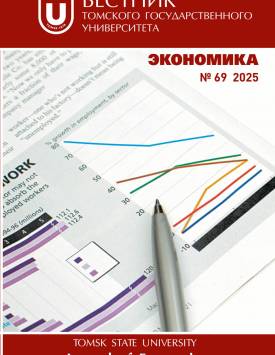Directions for expanding employment in conditions of personnel shortage
The article examines the transformation of the labor market and population employment in the context of personnel shortage. The main conclusions of the work are that, firstly, the labor market of modern Russia is experiencing an active development of flexible forms of employment, which are reflected in the socio-economic processes of the regions and the legal framework of the Russian Federation. The law On Employment in the Russian Federation defines the legal field for previously non-included phenomena and concepts, such as "self-employment", "platform employment", etc. Thus, the labor market and government labor services indicate the development of alternative, flexible forms of the population's employment. This makes it possible to legalize the labor activity of a number of categories of the population, in particular those working on digital platforms and creating their own workplace. Secondly, trends in regional demographic indicators determine the scale of employment and the specifics of personnel shortages in times during a period of personnel shortage. Today, much attention is paid to such socio-demographic groups as young people and the older generation. According to the UN, the aging process is becoming one of the most significant transformations of the 21st century. The author's position is to continue to identify socio-demographic groups of the country's population that are capable of making up for the decline in labor force. Thirdly, the implementation of the concept of a flexible labor market requires expanding the provision of flexible labor regimes to the population. The basis for this concept, which has been studied since the 1970s, is the transition to more flexible, functionally individualized and non-standard forms of employment. The main advantage of such a labor market is the ability to adequately respond to changes in prices, demand and supply of labor resources and create the required quantity, quality and price of labor. Fourthly, an effective measure to solve the personnel shortage problem is economic incentives and social conditions that can attract and retain qualified workers. In industrially advanced sectors that meet the tasks of scientific and technological development of the Russian Federation, a combination of high-tech equipment and highly qualified personnel is more necessary, which will help ensure such development of Russian regions. While the service sector is the most flexible to the norms of a flexible labor market due to its labor-intensive nature, it largely depends on the application of management methods, quality optimization, organizational issues, and socio-psychological stimulation. Fifthly, systematic monitoring of the labor market is required at regional and sectoral levels. The analysis showed that, despite the general trends in the transformation of the labor market and employment in the Russian Federation, there are differences in territorial manifestations and areas of economic activity. The findings of the work may be useful to scientists, specialists, and politicians studying the problems of the labor market and employment in conditions of personnel shortage. The author declares no conflicts of interests.
Keywords
personnel, youth, precariat, productivity, regional economy, demography, adaptation, sanctions, employment lawAuthors
| Name | Organization | |
| Andreyanova Elena L. | Federal Center of Theoretical and Applied Sociology of the Russian Academy of Sciences | elena_andreyanova@mail.ru |
References

Directions for expanding employment in conditions of personnel shortage | Vestnik Tomskogo gosudarstvennogo universiteta. Ekonomika – Tomsk State University Journal of Economics. 2025. № 69. DOI: 10.17223/19988648/69/7
